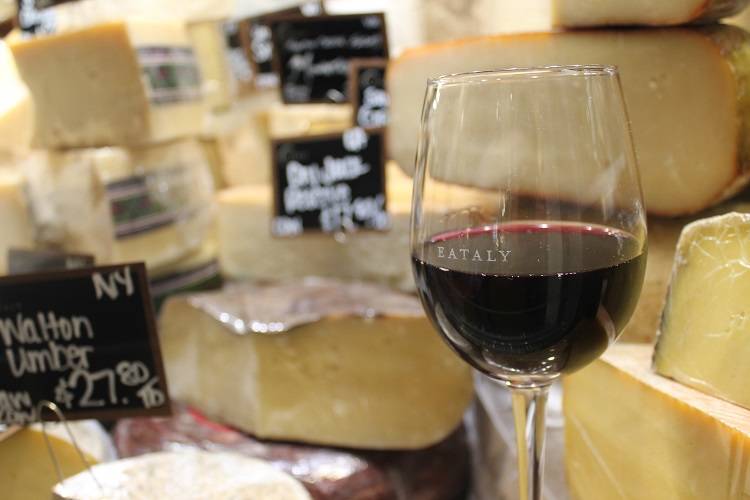How to Pair Wine and Cheese
1. START WITH INTENSITY.
Compare the respective power of the products. Light goes with light; bold with bold. Fresh, simple cheeses tend to be enhanced by elegant, delicate wines. By the same token, a robust red can take on the bigger flavors of a stronger cheese.
Sample pairings: Elegant white Falanghina with delicate mozzarella di bufala, light red Pinot Nero with mild Taleggio, bold red Barolo with flavorful Grana Padano
2. CONSIDER THE FLAVOR.
Try to match the flavors (acidity, saltiness, sweetness, bitterness, etc.), taking into account how the cheese’s texture will contribute. Complement or contrast by smoothing out a wine's bracing acidity with a creamier cheese or accentuating a lighter wine’s acidity with a harder cheese. When in doubt, high acidity and some sweetness are a cheese's best friends when it comes to wine.
Sample pairings: Intense Sangiovese with soft ricotta, complex white Pinot Bianco with semi-firm fontina, sparkling Moscato d’Asti with firm Asiago
3. THINK REGIONALLY.
As the old adage goes, “What grows together goes together.” Each of Italy’s 20 regions boasts its own selection of wine and cheeses, thanks to traditional production methods and biodiversity. The local products naturally connect, creating simple and elegant pairings.
Sample pairings: Piemonte’s Langhe Rosso with robiola, Toscana’s Nobile di Montepulciano with Pecorino Toscano, Puglia’s Rosato di Negroamaro with burrata
4. THROW THE RULES OUT THE WINDOW.
Like we said: the wine and cheese worlds are both endless, creating an infinite number of possible pairings. While the above serves as a good guideline, don’t forget to be creative.
5. START TASTING!
To begin your own wine-and-cheese education, we recommend setting a table with one bottle of wine, four varied cheeses (at room temperature), and a loaf of rustic bread. Sip the wine with a clean palate, take a bite of the first cheese, and note the flavor combinations. Take another sip of wine after swallowing the cheese, and write down your observations. Cleanse your palate with a piece of bread, and repeat. This self-guided class is especially fun with a fellow “student” (or two, or three).


































i-Italy
Facebook
Google+
This work may not be reproduced, in whole or in part, without prior written permission.
Questo lavoro non può essere riprodotto, in tutto o in parte, senza permesso scritto.